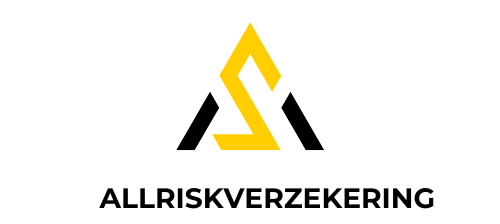In this age of technology, you’ve probably seen, heard or even experienced the power of virtual reality (VR) first hand. This isn’t surprising, given how VR technology has been steadily disrupting various industries, from entertainment to manufacturing. But what about the design industry?
With the advent of remote work due to unforeseen circumstances, many industries were forced to adapt. The sudden shift experienced across the globe introduced numerous challenges, particularly in terms of collaboration and communication. But thanks to VR, these challenges are gradually being overcome.
Also to see : How is AI reshaping the approach to personalized cancer therapy?
This article will explore how VR technology is enhancing remote collaboration in the design industry.
The Power of Virtual Reality in Remote Collaboration
How exactly does VR technology enhance remote collaboration in design? Let’s start with a quick introduction to the mechanics of VR.
Also read : What’s the Role of Technology in Personalized Diet Planning and Nutrition?
Virtual reality is a computer-generated environment that lets users interact in a digital world, as though they were in a real world. This immersive experience is made possible by VR headsets, which allow users to either see a 3D computer-generated environment or a real-world view that’s augmented by computer-generated elements.
In a remote work environment, VR can help recreate the physical workspace and facilitate face-to-face interactions. From real-time design modifications to virtual walkthroughs, VR makes collaborative tasks more efficient.
The Role of VR in Design Communication
In the design industry, communication is paramount. Miscommunications can lead to costly errors and project delays. VR technology, however, can bridge these communication gaps.
In the past, designers had to rely on flat, two-dimensional images to express their ideas. With VR, they can now create immersive environments that clients and team members can explore. This not only enhances the understanding of design concepts but also improves feedback collection and implementation.
Imagine being able to communicate your ideas in a three-dimensional format. You could guide your team or clients through the space, highlighting important aspects of the design and quickly adapting to suggestions or critiques. This ability to interact with the design in real-time significantly reduces the chance of miscommunication.
VR Environments for User Experience Design
If you are involved in user experience (UX) design, VR can revolutionize your approach. No longer do you have to rely on abstract concepts or flat mock-ups. With VR, you can create immersive, realistic environments that allow clients and users to experience the design as if it were real.
For instance, if you’re designing a new ecommerce website, you can use VR to create a virtual store. Here, users can navigate through the virtual environment, interacting with products as they would in a physical store. This provides invaluable insights into the user experience, allowing you to make necessary adjustments based on real user interactions.
Enhancing Team Collaboration with VR
When it comes to remote work, team collaboration can be a significant challenge. Without the possibility of physical meetings or spontaneous office discussions, team members may feel isolated or disconnected. However, VR can change this.
By creating a virtual workspace, you foster organic interactions among team members. They can meet, discuss, and collaborate as if they were in the same room. This is especially beneficial for design teams, where close collaboration is key to executing a cohesive and effective design.
Moreover, VR training can be a game-changer for onboarding new team members or implementing new design strategies. Traditional remote training can feel impersonal and detached. But with VR, you can create engaging, hands-on training programs that not only convey information but also offer a memorable experience.
The Future of VR in Remote Design Collaboration
At this point, it’s clear that VR technology has a lot to offer in enhancing remote collaboration in the design industry. However, this is just the beginning. As technology continues to advance, we can expect to see more sophisticated and immersive VR tools that further blur the lines between the digital and real worlds.
VR will continue to revolutionize the way we think about design. It’s not just about creating attractive visuals anymore; it’s about creating immersive experiences that engage users on a deeper level. In the future, we may see entirely virtual design teams working together in a shared virtual environment, free from the constraints of physical location.
While we can’t predict exactly what the future holds, one thing is certain. Virtual reality is here to stay, and it’s reshaping the way we collaborate and design. So, whether you’re a designer, project manager, or stakeholder, it’s time to embrace VR technology and explore the opportunities it presents.
Redefining Decision Making with VR
Decision making is a critical part of the design process. In traditional settings, these decisions are often made during in-person meetings, where team members can share and discuss ideas. However, this has proven to be a challenge in remote work settings. Virtual reality can redefine this process, making decision making more efficient and immersive.
By using VR, you can get multiple stakeholders into a virtual environment where they can assess and evaluate designs in real-time. Instead of having to rely solely on verbal descriptions and 2D renderings, they can now interact with the designs, gaining a better understanding of the space, layout, or user interface. This can result in more informed, accurate, and faster decisions.
Additionally, the VR technology provides an opportunity to visualize various design alternatives and understand their implications better. For instance, in architectural design, you can swiftly switch between different color schemes, furniture layouts, or lighting designs. This flexibility can lead to better design outcomes and empower the team members to make decisions confidently.
Furthermore, with the development of virtual collaboration tools, you can incorporate real-time annotations and feedback within the VR environment. This feature allows instantaneous discussions and modifications, streamlining the decision-making process and reducing the likelihood of costly mistakes.
Overcoming Motion Sickness in VR Collaboration
While VR has many benefits, it is not without its challenges. One of the major obstacles in VR collaboration is motion sickness, a common side effect experienced by some users. This can make the VR experience uncomfortable, thus affecting the efficiency of collaboration.
However, the technology is rapidly evolving to combat this issue. Developers are working on creating more natural movement within VR environments to reduce the disorientation and discomfort associated with motion sickness.
Furthermore, VR systems are getting better at tracking user movement and adjusting the virtual environment accordingly. This reduces the discrepancy between the user’s physical movements and the corresponding movement in the VR world, which is a significant factor contributing to motion sickness.
Another approach to mitigate this issue is through user education and adaptation. Like many new technologies, there is often a learning curve associated with VR. With proper guidance, users can learn how to navigate the VR environment more effectively, minimizing the risk of motion sickness.
Conclusion
With the continued advancement of virtual reality technology, we are witnessing a shift in how design teams collaborate. VR has proven to be a significant asset in enhancing remote collaboration by recreating the physical workspace, facilitating real-time interactions, and revolutionizing the design communication process.
Despite the challenges such as motion sickness, the potential of VR in design collaboration is undeniable. It has the power to transform abstract concepts into immersive environments, making the design process more efficient and engaging. Furthermore, VR can redefine the decision-making process by providing an immersive platform for real-time assessment and evaluation of design alternatives.
The future of VR in remote collaboration holds many opportunities. As technology continues to advance, we can expect to see more innovative uses of VR, shaping the way we work, collaborate, and design. What once seemed like a futuristic concept is now a reality, and it’s time to embrace this change.
No matter what role you play – a designer, a project manager, or a stakeholder, VR has something to offer. Its ability to blur the lines between the digital and real worlds is not just the future – it is the present. As we move forward, it’s clear that VR will play a pivotal role in shaping the design industry. The virtual revolution is here, and it’s changing the way we design and collaborate.
















